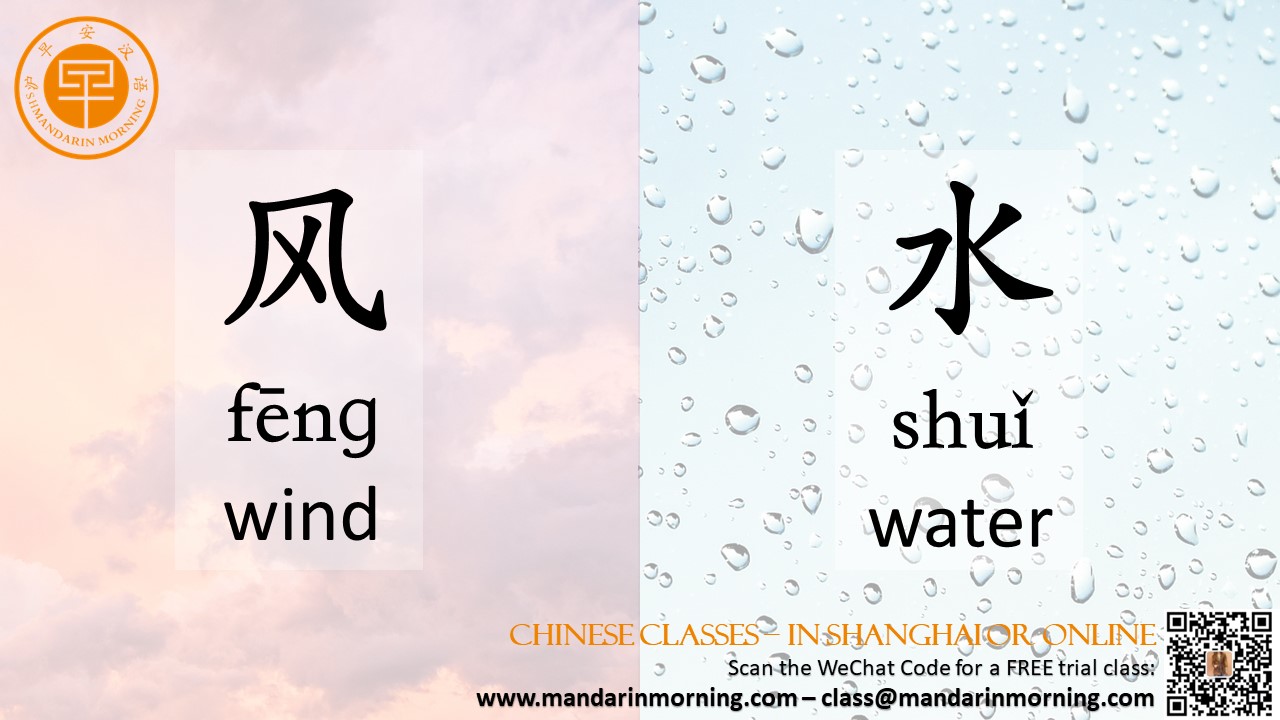| Feng Shui is an ancient Chinese philosophy that advocates for living in harmony with nature to attain balance in life. 风 fēnɡ – wind 水 shuǐ – water These elements represent the flow of energy that shapes the earth and its characteristics. In China, Feng Shui experts are consulted to interpret the location of buildings and the surrounding landscapes to reduce the negative energy that could affect people living in that place.  Origins Feng Shui originated in China during the Warring States period (476-221 BC) and was initially called Kan Yu (堪舆 kānyú), which means “sky and hearth.” The name Feng Shui was first used by the Chinese poet and historian, Guo Pu, in his masterpiece “Book of Burial.” In ancient times, Feng Shui experts were secretly hired by emperors to not waste their knowledge. They were consulted not only to decorate rooms and palaces, but also to prepare war strategies and assess the suitability of land for a new village. The 4 celestial animals To determine whether a location is suitable for building a house or a building, it is necessary to check if the landscape has the 4 celestial animals, also known as guardians of directions: Black Tortoise: it symbolises protection and longevity and is located in the north. In ancient China, cold winds came from the north and, therefore, a protective shield was necessary. It is represented by high mountains or buildings in nature. Green Dragon: it is located in the east and is represented by a small hill in nature. The lack of a green dragon near the house can lead to financial problems. White Tiger: it is located in the west and provides its support from the ground or through hills. The lack of a white tiger can cause instability and confusion in the house. Red Phoenix: it is in the south. In nature, it can be found as a large space in front of the entrance that encourages the entry of vital energy known as 气 (qì). Bagua map Feng Shui tradition wants the house plant to be square or rectangular, and each room should be placed following the cardinal points: the entrance to the north and the rooms to the south. When consulting a Feng Shui expert, they compare the house plant with a geometric map called Bagua, divided into “areas” related to one of the 5 elements (water, metal, wood, fire, earth) and a specific aspect of life: Fame: this area is related to desires, and its element is fire. Decorate the room with candles. Wealth: this area is represented by the element of wood, and therefore, it should be decorated with lots of plants. Family: this area is related to our roots and also dominated by wood. Knowledge: this area is related to thoughts, and should be furnished with soft lights and materials to encourage meditation. Career: this area is related to how we show ourselves to the world and is dominated by water. Travel: this area is related to social relationships. Here everything is about those people who are part of our journey, therefore it should be decorated with photos. Marriage: this area is dedicated to how we relate to people who love us. The furniture should be in pairs. Center: this area represents Yin and Yang and should be well-balanced. Decorate with crystal balls that balance energies. Even colours have a specific position: warm colours should be used in rooms located in the south and cool ones in rooms located in the north. |